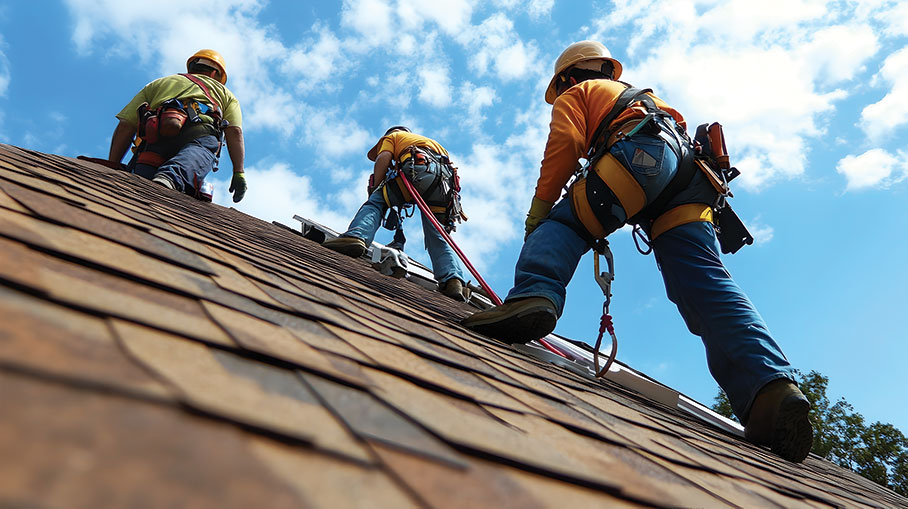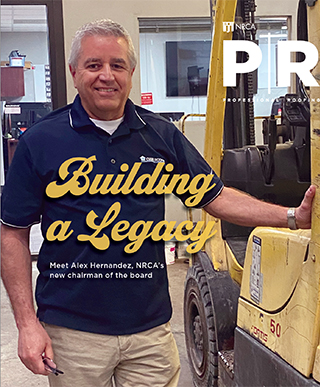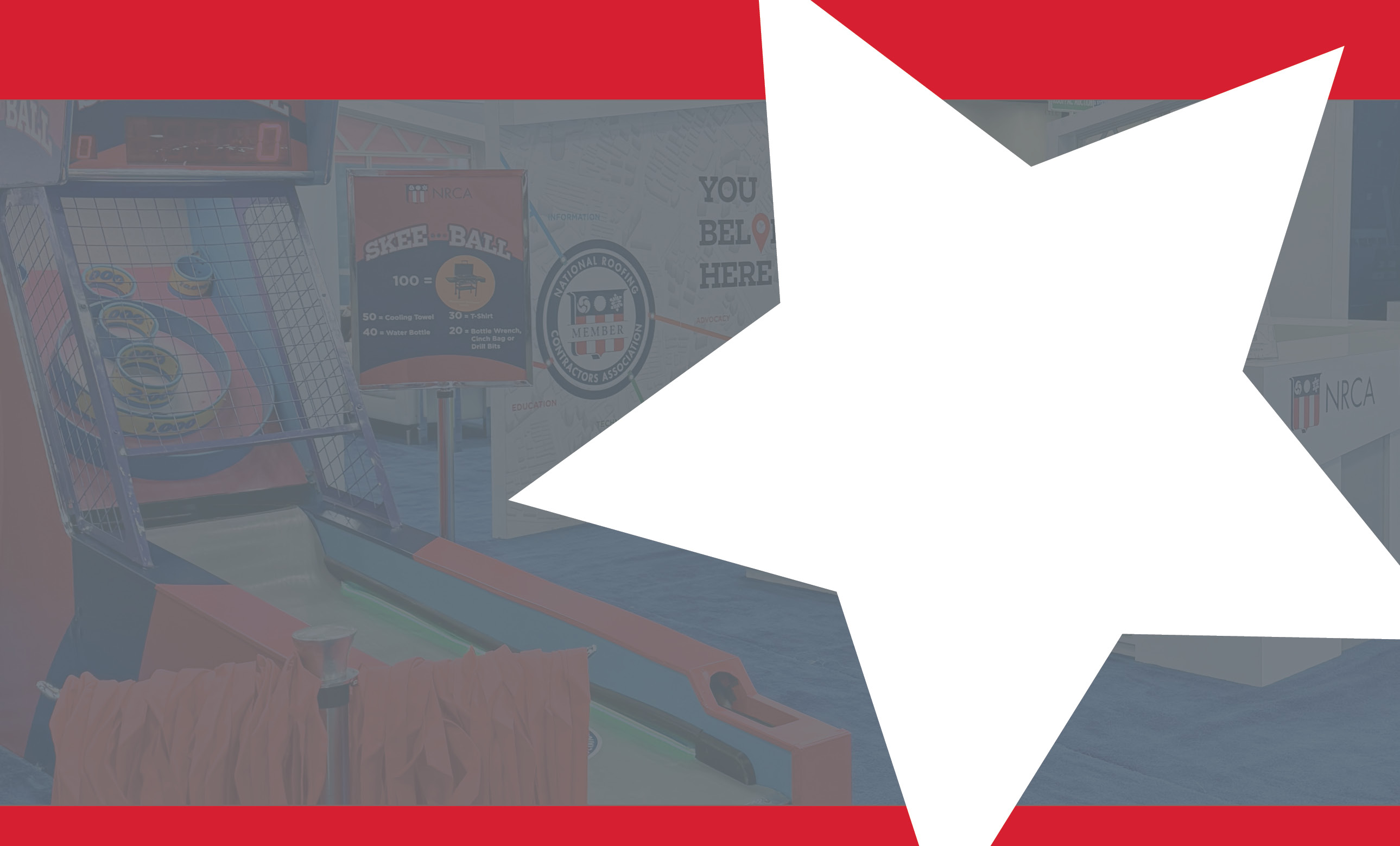
In May 2023, the Occupational Safety and Health Administration launched a national emphasis program targeting fall-related hazards across all industries. Through this initiative, OSHA underscored its commitment to reducing injuries and fatalities resulting from falls.
The program signals OSHA’s heightened enforcement efforts to address fall hazards in the roofing industry, which likely will continue.
What it covers
Although the national emphasis program encompasses all sectors, it places emphasis on the construction industry because of its higher incidence of fall-related fatalities.
The program is designed to:
- Expand inspection efforts. OSHA compliance officers proactively inspect roofing job sites where fall hazards are evident even without a formal complaint or referral.
- Target high-risk activities. The program prioritizes inspections in activities such as residential and commercial roof system installation, reroofing and repair work.
- Strengthen compliance requirements. Roofing employers are expected to adhere to OSHA’s fall-protection standards under 29 CFR 1926.501, “Duty to have fall protection,” which mandates the use of guardrails, safety nets or personal fall-arrest systems for workers operating at heights of 6 feet or higher.
- Enhance outreach and training. OSHA collaborates with industry groups, unions and safety organizations to promote awareness and provide training regarding fall-hazard prevention.
- Increase penalties for repeat violations. Employers with a history of fall-protection violations face significantly higher fines under the national emphasis program.
The program employs a dual strategy of enforcement and outreach. Compliance officers are empowered to conduct immediate inspections upon observing fall hazards even during routine travel or while in route to other inspections.
Concurrently, OSHA emphasizes educating employers and workers regarding effective fall-protection measures. Area and regional offices develop comprehensive fall-prevention awareness programs, aiming to foster a culture of safety and compliance.
What it means
Employers, particularly those in construction, should anticipate continued increased OSHA inspections under the national emphasis program. It is imperative employers:
- Review and, if necessary, enhance their fall-protection programs
- Ensure all equipment meets OSHA requirements and industry standards
- Provide comprehensive training for employees that addresses fall-hazard recognition and prevention
Proactive compliance not only mitigates the risk of citations but also safeguards the well-being of workers.
The program represents a significant effort on OSHA’s part to address and reduce one of the most persistent safety challenges in the workplace. By combining stringent enforcement with robust educational outreach, OSHA is aiming to create safer work environments across all industries.
With increased inspections and significant fines for noncompliance, roofing companies must take proactive measures to ensure worker safety
OSHA inspections
Under the national emphasis program, OSHA inspections can be triggered in several ways:
- Observed hazards in plain view: OSHA compliance officers are authorized to initiate inspections whenever they observe workers exposed to fall hazards while driving or conducting other work activities. This means an inspection can occur without notice if an officer sees workers at heights without adequate fall protection.
- Programmed inspections: The program includes planned inspections targeting industries and worksites with a high incidence of fall-related hazards. This is based on OSHA’s data and may focus on sectors such as construction, roofing, telecommunications, and service or maintenance work at heights.
- Complaints, referrals and incidents: Inspections also can be triggered by employee complaints regarding fall hazards; referrals from other agencies, media reports or other credible sources; or reports of severe injuries or fatalities related to falls.
- Inspections expanded from other cases: If an OSHA compliance officer is already on-site for another inspection (such as a routine safety check or a response to a different violation), the officer may expand the inspection scope if fall hazards are observed.
Stand-down for safety
May 5-9 is the Occupational Safety and Health Administration’s National Safety Stand-Down to Prevent Falls in Construction as well as Construction Safety Week, where employers in the construction industry collectively commit to raise the bar on safety awareness and stop fatal falls. NRCA is proud to participate in OSHA’s stand-down again this year as a premier partner.
For more information, visit osha.gov.
Fall-prevention measures
To avoid costly fines and, more importantly, protect workers, roofing contractors must:
- Provide and use proper fall-protection equipment: Ensure workers use personal fall-arrest systems, including harnesses, lanyards and anchor points when exposed to fall hazards of 6 feet or higher.
- Install protective measures: Use guardrails, safety nets and warning lines to prevent falls from edges and openings. Use skylight protection to prevent fall-through.
- Provide comprehensive training: Conduct regular training about hazard recognition, proper equipment use and OSHA fall-protection requirements.
- Ensure ladder and scaffold safety: Use stable, OSHA-compliant ladders and scaffolding with proper fall-protection systems.
- Develop and enforce a fall-protection plan: Implement site-specific fall-protection plans and ensure strict adherence by all employees.
- Encourage a culture of safety: Promote open communication about hazards and empower workers to report unsafe conditions without fear of retaliation.
Be proactive
With increased inspections and significant fines for noncompliance, roofing companies must take proactive measures to ensure worker safety. Prioritizing fall protection not only prevents accidents but also fosters a culture of safety in the workplace.

CHERYL AMBROSE, CHST, OHST
Vice president of enterprise risk management
NRCA



